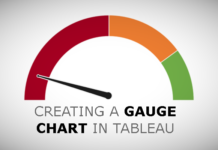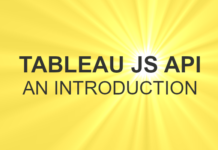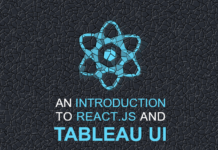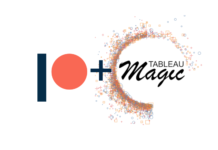Q1. Regarding Filter Order of Operation, which Filter Type does Tableau applied first?
B is correct. Extract Filters are the first filters to be applied. This is then followed by Data Source Filters, Context Filters, Set Filters, Filters on Dimension, Filters on Measures and finally Filters on Table Calculations
Q2. Which of the following statements is NOT TRUE regarding Context Filters?
C is correct. If your data set is heavily indexed, Context Filters may not provide performance improvement and may actually cause slower query performance. A is true as you can have multiple Context Filters in a worksheet. B is true as Context Filters are grey colored. D is true as you can set a Context Filter on LOD objects.
Q3. What expressions computes a value using the specified dimensions, without reference to the dimensions in the view?
D is correct. RESOLVE is not an LOD expressions. An EXCLUDE expressions declare dimensions to omit from the view level of detail. An INCLUDE expression declares specific dimensions in addition to whatever dimensions are in the view.
Q4. A Table Calculation is best described as
A is correct. B describes RAW functions. C describes SCRIPT functions. D describes Level-of-detail expressions.
Q5. Which of the following is NOT TRUE regarding Published Data Extracts?
B is correct. Published Data Extracts are great for removing random SQL queries from your OLTP database system by extracting all the data in one go and making it available to your Tableau Dashboards. However, this does have a workload cost in terms of data storage, additional processing, and Tableau Server processors. Published Data Extract is one of the key reasons for purchasing an additional Server to host your Backgrounders. Published Data Extracts are pre-aggregated, materialized and highly optimized to improve your dashboard performance.
Q6. Which statements is TRUE about Tableau Reader?
D is correct. Tableau Reader can be deployed as many times as you want to deploy it, it is a completely FREE product. Tableau reader can only open Tableau Packaged Workbooks (.twbx). This means no Tableau Server access and no Tableau Workbooks (.twb) access.
Q7. A Tableau Workbook is an XML file?
A is correct. If you have not done so already, I would encourage you to open a Tableau workbook a text editor and have a browse around. Please do not make changes as this is the quickest way to corrupt a workbook. There is a Document API that allows you to modify a Workbook programmatically.
Q8. Which of the following is NOT a selectable join type in the visual data editor?
D is correct. The selectable join options in the visual editor are Inner, Left, Right and Outer.
Q9. In the Data Source Editor, can you create and join data from different data sources?
A is correct. In your Data Source Editor window you can actually add additional connection (to a completely different source system), and then drag and join tables from different systems. I have never used this technique as I could not imagine how I would performance tune this, or can even imagine the performance nightmares that this can result in... but it is possible and I have seen it done by others.
Q10. What is the maximum number of Tables that can be joined in Tableau via the Visual Data Editor?
B is correct. There is an upper limit of 32 tables, however, if you are using Custom SQL, there is no upper limit. To be fair, if you have 32 table joins in your query, you really need to look into your data source and see if you can do some data modelling, table joins do have an associated cost.
Q11. Tableau comes with out-of-the-box integration with version control tools like SVN or TFS
B is correct. I do not know why Tableau does not have integrations with enterprise version control tools as yet. I am sure this is on the wish list of anyone that works in a medium to large enterprise. As Tableau workbooks are essentially XML files or zip files, you can put these into version control, but an integration would be so much nicer. Tableau does have versioning on the Tableau Server when you publish assets, but that is about it.
Q12. Which file would you look at to get information about an Data Extract SQL?
C is correct. If you were using a live connection, you could go to log.txt and tabprotosrv.txt to try and find the query. Extract.txt does not exist.
Q13. With a Data Extract, can you leverage the RAWSQL functions?
B is correct. You can only use RAWSQL functions with a live connections. This is a limitation of using Data Extracts.
Q14. Which statement is TRUE regarding Initial SQL for Data Connections?
B is correct. The Initial SQL statement is executed when a connection is made to a database; this can be used to run SQL statement or call stored procedures. At present this is only supported by a limited number of databases.
Q15. If you are an experienced Tableau Developer, you should ALWAYS use Custom SQL
B is correct. This one might spark off some debate, and I am happy to debate. Language is important and when someone says you should do something, it needs to be cast iron and normally to do with development processes and not development styles. For example, if I have a connection with a select from a single table, why would I write Custom SQL, it makes no sense to do? However, if I am doing something a lot more complex that might require in-depth performance tuning, I may want to use Custom SQL to ensure that Tableau sends the exact query that I want to the database. I think it is all situation dependent and not based on experience.
Q16. Tableau Workbook Performance Monitoring Tools are currently only available for Tableau Desktop
B is correct. You can enable and run Tableau Workbook performance monitoring on the Tableau Server as well. This is quite a nice tool but requires your site administrator to enable this feature. Please Google this one as it is a life saver.
Q17. Tableau enables MDX queries against all data sources
B is correct. Multidimensional Expressions (MDX) are only supported by Online Analytical Processing (OLAP) data sources. If you have some time, do check out MDX as it is a completely different world of querying.
Q18. Which of the following is NOT a Tableau API
D is correct. WebHooks is a brand new feature that I believe is still in beta, and is not an API but a means of configuring end-points for event callbacks. The REST API allows you to integrate with a Tableau Server. The Document API allows you to programmatically modify a workbook. The JavaScript API allows you to embed and control Tableau Server published workbooks in your own web application.
Q19. As of Tableau Server 2018.2, you can use both Tabadmin and TSM on Windows.
D is correct. As of Tableau Server 2018.2, Tableau Services Manager (TSM) has replaced Tabadmin for server tasks. Please Google Tabadmin to TSM migration to see the differences.
Q20. Tableau supports SXL for organisation wide SSO requirements
B is correct. I have no idea what SXL is, but Tableau does support SAML; SAML (Security Assertion Markup Language) is an XML standard that allows secure web domains to exchange user authentication and authorization data. You can configure Tableau Server to use an external identity provider (IdP) to authenticate users over SAML 2.0. No user credentials are stored with Tableau Server, and using SAML enables you to add Tableau to your organization’s single sign-on environment.
Share your Results:






















